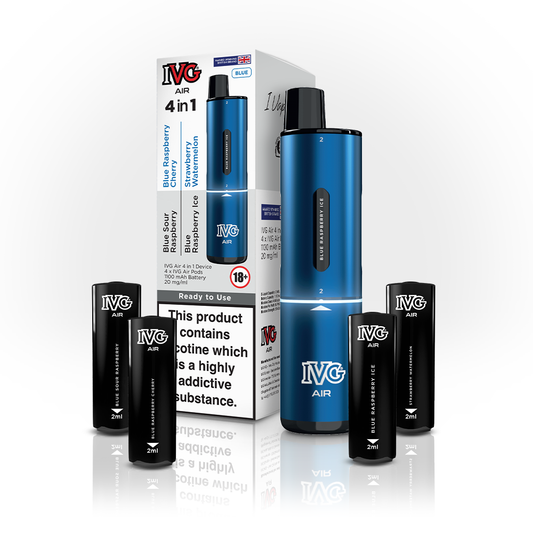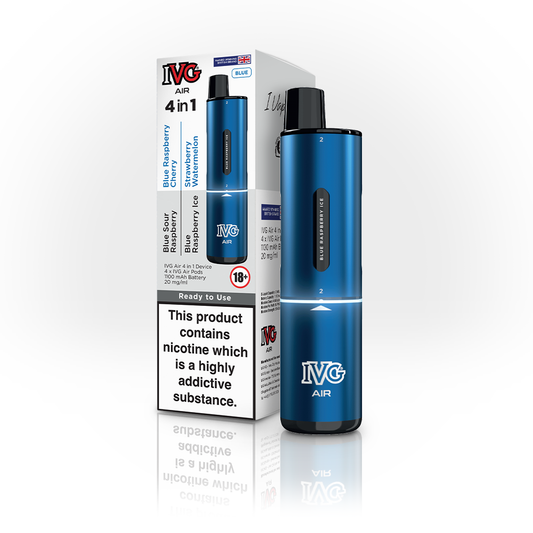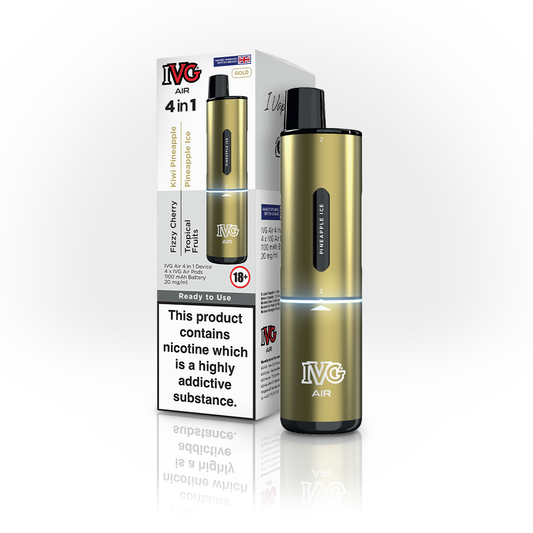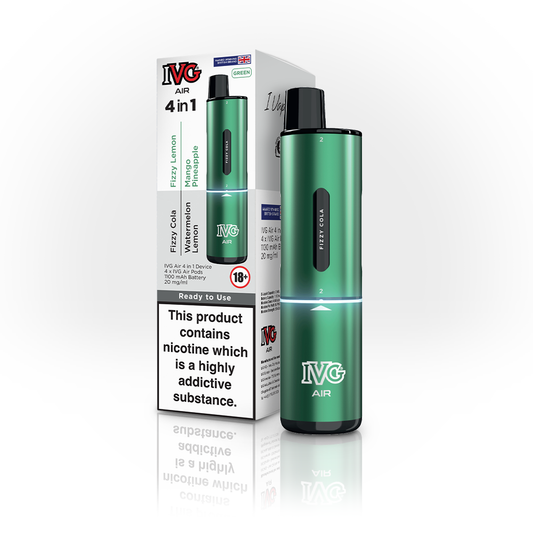Quitting Smoking: A Complete Guide for Adult Smokers
Many adult smokers explore ways to reduce or quit smoking. This guide will help you understand the process, plan for change, and discover options that fit your lifestyle.
Smoking is the leading cause of preventable illness and early death in the UK. The NHS and the World Health Organization (WHO) link tobacco use to lung cancer, heart disease, stroke, and many other serious conditions. Stopping smoking is the most effective way to reduce these risks.
If you aren’t ready to give up nicotine altogether, other options come without the smoke, ash, or health concerns of traditional cigarettes.
Contents:
- Understanding the Effects of Smoking
- Planning for Change: Benefits & Motivations
- Navigating Obstacles: What to Expect When You Quit
- Nicotine Replacement Options & Smoking Support
1. Understanding the Effects of Smoking
Smoking affects more than your lungs; it impacts your physical health, mental well-being, finances, social life, and the lives of those around you. Understanding these effects can help you make informed decisions about quitting or considering alternatives.
Physical Health
Tobacco smoke contains over 7,000 chemicals, many of which are toxic or carcinogenic (have the potential to cause cancer). The UK government links smoking to various illnesses and diseases, such as lung cancer, heart disease, stroke, chronic obstructive pulmonary disease (COPD), and reduced lung function. Smokers also face:
- Slower wound healing and increased risk of infections
- Gum disease and tooth loss
- Fertility issues and complications during pregnancy
- Higher susceptibility to respiratory infections and reduced immune response
Mental Wellbeing
Many smokers feel that cigarettes help them relax or cope with stress. In reality, smoking relieves the discomfort of nicotine withdrawal, creating a cycle of dependence that can increase overall anxiety.
Most smokers are aware that smoking harms their health, finances, and social life, which can add to stress, especially when thinking about cutting down or quitting.
Understanding that the sense of relief from smoking is temporary, and due to avoiding withdrawal, can help people make informed decisions about their health.
Impact on Loved Ones
Secondhand smoke exposes family and friends to the same harmful chemicals, which can damage their health. This increases their risk of:
- Lung cancer and heart disease
- Respiratory infections and asthma exacerbations in children
- Pregnancy complications such as low birth weight or premature birth
- Most people can’t see or smell secondhand smoke, and it can linger in a room for 2-3 hours in a well-ventilated room.
Financial Impact
The cost of smoking soon adds up. For instance, smoking one £18 20-pack per day totals:
| Time | Cigarettes Smoked | Cost of Smoking (£) |
|---|---|---|
| 1 month | 600 | £540 |
| 6 months | 3,600 | £3,240 |
| 1 year | 7,200 | £6,480 |
| 5 years | 36,000 | £32,400 |
| 10 years | 72,000 | £64,800 |
Beyond the expense, smoking can also lead to higher healthcare costs and potential income loss due to illness.
Social Impact
According to Imperial College London Research, smoking can affect social connections and contribute to feelings of isolation:
- Social stigma and negative perceptions: Smokers may suffer judgment from peers, which can affect relationships.
- Restricted social spaces: Using designated smoking areas can limit time spent with family and friends who don't smoke.
- Avoiding smoke-free environments: Smokers may skip activities where smoking isn’t allowed, such as gyms, workplaces, or social events, increasing the risk of social isolation and loneliness.
Planning for Change: Benefits & Motivations
While smoking can feel hard to stop, change is possible at any stage. Many adult smokers reduce health risks, improve well-being, and regain control of their finances and social life by quitting or trying alternatives. Even small steps can make a real difference, regardless of age or smoking history.
Benefits of Quitting Smoking
Making a change can have tangible results across many areas of your life:
- Physical health: Improved circulation, lung function, and reduced risk of heart attack, stroke, and cancer.
- Mental well-being: Lower stress and anxiety levels, improved mood, and better focus.
- Loved ones: Protects family and friends from secondhand smoke.
- Finances: Money spent on cigarettes can go toward savings or other priorities.
- Social life: Easier participation in social activities, without stepping away to smoke or dealing with smoke-related stigma.
Quit Smoking Timeline
Seeing a benefits timeline can help you visualise realistic goals and motivate you to become smoke-free.

Scroll to view the full timeline
Recognising Your Goals and Motivations

Understanding why you want to make a change is a powerful motivator. Consider:
- Health goals: Do you want to improve breathing, stamina, or reduce long-term disease risk?
- Family and relationships: Protecting loved ones from secondhand smoke or setting a positive example for children.
- Financial reasons: Saving money for a holiday, hobby, or future plans.
- Personal achievement: Feeling more confident, independent, or in control of your choices.
- Lifestyle improvements: Being able to take part in activities without smoking restrictions or stigma.
Log your motivations and remind yourself of them. Setting clear, realistic goals, such as reducing cigarette consumption, trying an alternative nicotine option, or aiming to quit by a specific date, makes the process more manageable and provides milestones along the way.
Resource: NHS Better Health Free Personal Quit Plan
Taking Safe Action
Whatever your goal, prioritise your safety and:
- Consult a healthcare professional: Discuss your health, smoking habits, and circumstances to get personalised guidance.
- Explore support networks: Trusted friends, family, or support groups can provide encouragement, accountability, and practical help.
- Consider alternatives: Public Health England and the NHS recognise nicotine replacement options like patches, gum, lozenges, inhalators, and vaping.
Even small steps count. The key is tailoring support to your situation in an informed, safe way.
3. Navigating Obstacles: What to Expect When You Quit
Whether cutting down, quitting, or trying nicotine alternatives, challenges are normal. Your body and mind adjust with cravings, mood changes, and triggers, but these are temporary and manageable with the right strategies.
Smoking Withdrawal Symptoms
When you reduce or stop smoking, it’s common to experience withdrawal symptoms. These can alter your body, emotions, and routines, but understanding them helps you manage the process better.
Physical and emotional effects
- Irritability and cravings: Nicotine withdrawal can cause irritability, restlessness, and strong cravings for cigarettes.
- Sleep disruption: Some people have trouble falling or staying asleep during the first few weeks.
- Appetite changes: Quitting smoking can lead to increased appetite or mild weight gain.
Emotional and psychological triggers
- Smoking is often linked to daily routines, social situations, or stress. These triggers can make quitting more challenging. Recognising and planning for these situations can help you manage them.
Duration of challenges
- Most withdrawal symptoms peak within the first few days and improve over 2–4 weeks, although cravings may persist for longer.
Understanding Your Triggers and Cravings
Even when you’re committed to cutting down or quitting, some situations can spark the urge to smoke. Being aware of these triggers and having strategies to cope makes stopping easier.
Common triggers
- Daily routines: Morning coffee, breaks at work, or finishing meals can cue the desire to smoke.
- Social situations: Seeing friends or colleagues who smoke, or attending social events, can prompt cravings.
- Stress and emotions: Feeling anxious, frustrated, or bored often increases the urge to light up a cigarette.
Smoking is often triggered by cues like finishing a meal or feeling stressed, leading to the routine of smoking and its reward (relief or pleasure). Recognising this loop can help you break the habit with simple substitutes.
Coping strategies

- Plan alternatives: Replace cigarettes with a short walk, a glass of water, or a nicotine replacement option when cravings strike.
- Change routines: If certain habits trigger smoking, try to adjust them, for example, take a different route for your coffee break.
- Seek support: Friends, family, or support groups can help you stay accountable and encouraged.
- Mindfulness and relaxation: Breathing exercises, meditation, or stretching can reduce stress-related cravings.
FAQs: Common Questions About Quitting Smoking
Many people have misconceptions about quitting, making it seem more difficult than it is. Understanding the facts can help you stay confident, prepared, and motivated. Here are some frequently asked questions:
Q: Is the damage already done if I quit smoking?
A: It’s never too late to stop. Body repair begins straight away, and breathing and taste improve within days. The risks of heart and lung disease decrease within a year.
Q: Will I gain weight if I quit smoking?
A: Some may gain a little because nicotine suppresses appetite and burns calories. Healthy eating and activity can minimise weight gain.
Q: Is nicotine harmful?
A: Nicotine is addictive, but not the main harm. Chemicals such as tar and carbon monoxide pose health risks. NRT provides a safer way to get nicotine.
Q: Will quitting make me stressed?
A: Cigarettes may feel relaxing due to dopamine, but stress can increase. Normal dopamine regulation returns after 3 months.
Q: Is now the right time to quit?
A: Even during stressful periods, quitting is worthwhile. Pick a quit date, anticipate triggers, and get support from friends or family.
Q: Is hand-rolled tobacco better than cigarettes?
A: Roll-ups are not safer. They contain thousands of toxic chemicals, often higher nicotine and tar, and exposure can increase if they are unfiltered.
Q: Does my smoking harm anyone else?
A: Secondhand smoke increases the risks of lung cancer, stroke, and heart disease in non-smokers. It can cause respiratory illnesses, asthma attacks, and other harms in children.
4. Nicotine Replacement Options & Smoking Support
Quitting smoking is personal, with no one-size-fits-all approach. Knowing your support options can help manage cravings and find what works for you. The NHS suggests the following nicotine products and approaches to stop smoking:
Nicotine Replacement Therapy (NRT)
Nicotine Replacement Therapies include patches, gum, lozenges, inhalators, and nasal sprays. Helps manage withdrawal symptoms and reduce cravings by providing a controlled dose of nicotine without the harmful chemicals found in cigarettes.
Prescription Medications
Champix (varenicline) and Zyban (bupropion) are prescription options that can support quitting. These medications reduce cravings and withdrawal symptoms and can be used alongside behavioural support.
Support Services & Resources
You can get personalised support through Stop Smoking Services, including counselling and structured plans, or use apps and digital tools to track progress, manage triggers, and stay motivated.
Trusted organisations:
- Action on Smoking and Health (ASH): https://ash.org.uk
- Cancer Research UK – Smokefree Support: https://www.cancerresearchuk.org/about-cancer/causes-of-cancer/smoking-and-cancer
- British Heart Foundation – Quit Smoking Support: https://www.bhf.org.uk/informationsupport/support/quit-smoking
- Local Stop Smoking Services: Free face-to-face counselling, group sessions, and digital support. https://www.nhs.uk/better-health/quit-smoking/ready-to-quit-smoking/find-your-local-stop-smoking-service/
Vaping to Quit Smoking
The NHS recognise that some adult smokers use vaping as an alternative to cigarettes. Vaping delivers nicotine without smoke, ash, or many harmful chemicals present in tobacco.
Vaping is an option for adult smokers who are not ready to quit nicotine. It's not recommended for non-smokers, and the sale of e-cigarettes to under-18s is illegal.
Finding the right approach to quitting smoking is personal. You may need to try a few different methods or combinations before you find what works best for you. Always consult a healthcare professional before vaping.
Guide – Switching to Vaping: A Guide for Adult Smokers
How to Trust the Support You’re Getting

Use Qualified Services
Always seek guidance from qualified, reputable sources such as your doctor, the NHS, or registered charities. These organisations provide evidence-based support and up-to-date information on quitting smoking.
Leverage Your Support Network
Trusted friends, family, or support groups can help you stay motivated and manage triggers. Sharing your goals with people you trust increases accountability and emotional support.
Be Cautious With Commercial Advice
Vaping companies, retailers, or product manufacturers cannot provide personal medical advice. They can share factual information about vaping products, as long as it comes from trusted medical or public health sources such as the NHS.
Make any decisions about quitting or using nicotine alternatives with a healthcare professional.
Pregnancy, Health Conditions & Age Restrictions
It is illegal for people under 18 to buy tobacco products or nicotine replacement options to quit smoking. If you’re under 18 and want to stop smoking, speaking with a healthcare professional can help you find safe ways to reduce or quit.
If you are pregnant, have chronic conditions such as COPD, asthma, diabetes, or heart disease, or take regular medications, it’s essential to consult a healthcare professional before starting nicotine replacement or vaping.
Quitting smoking could improve outcomes for your condition; your healthcare provider can recommend the safest approach.
Congratulations! You’ve Taken the First Step
Quitting smoking is challenging, but achievable with the right support and strategies.
Understanding your triggers, preparing for cravings, and using practical coping methods can make the process more manageable.
Personalised support, through Stop Smoking Services, counselling, or structured plans, combined with digital tools and apps to track progress, helps increase your chances of success.
Stop Smoking Support: Useful Resources
- NHS Quit Smoking – Personalised advice, support plans, and progress tracking: https://www.nhs.uk/better-health/quit-smoking/
- Smokefree National Helpline (UK) – Free advice and support over the phone: 0300 123 1044
- Quit Smoking Apps – Track cravings, set goals, and maintain motivation (e.g., NHS Quit Smoking app, Smoke Free)
- Local Stop Smoking Services – Face-to-face counselling and structured quitting programmes: Find stop smoking support services – NHS
With the right help, preparation, and persistence, most people can stop smoking and improve their health, mood, and social life.













Leave a comment
Please note, comments need to be approved before they are published.